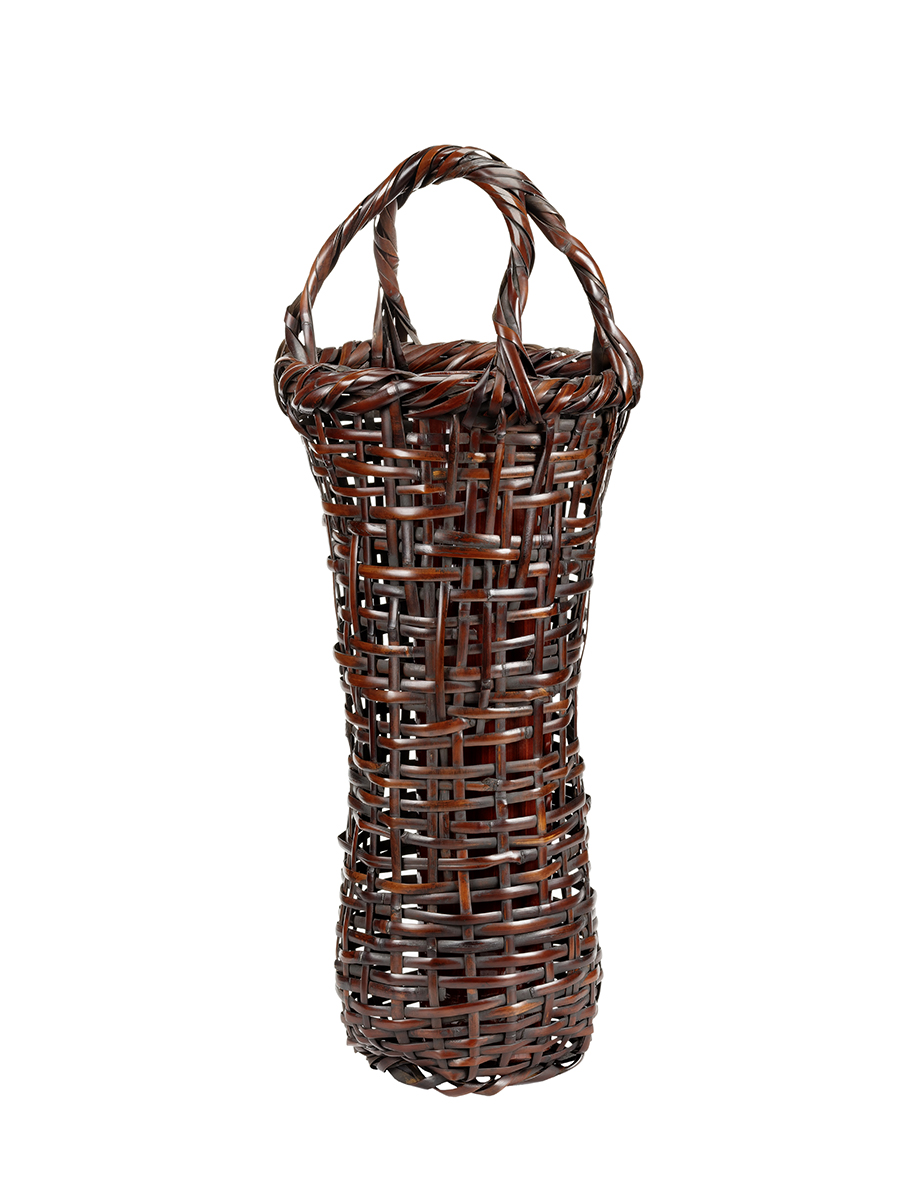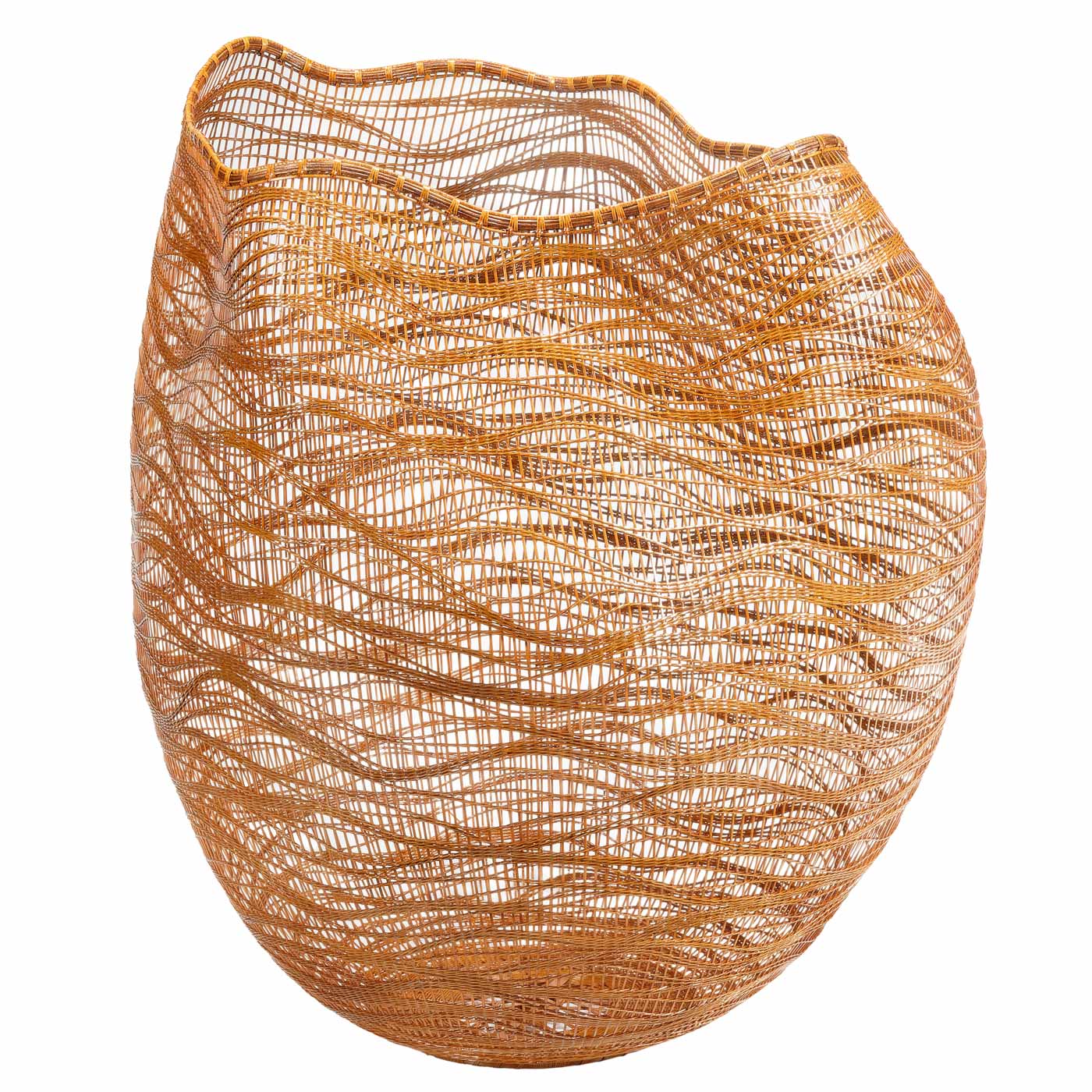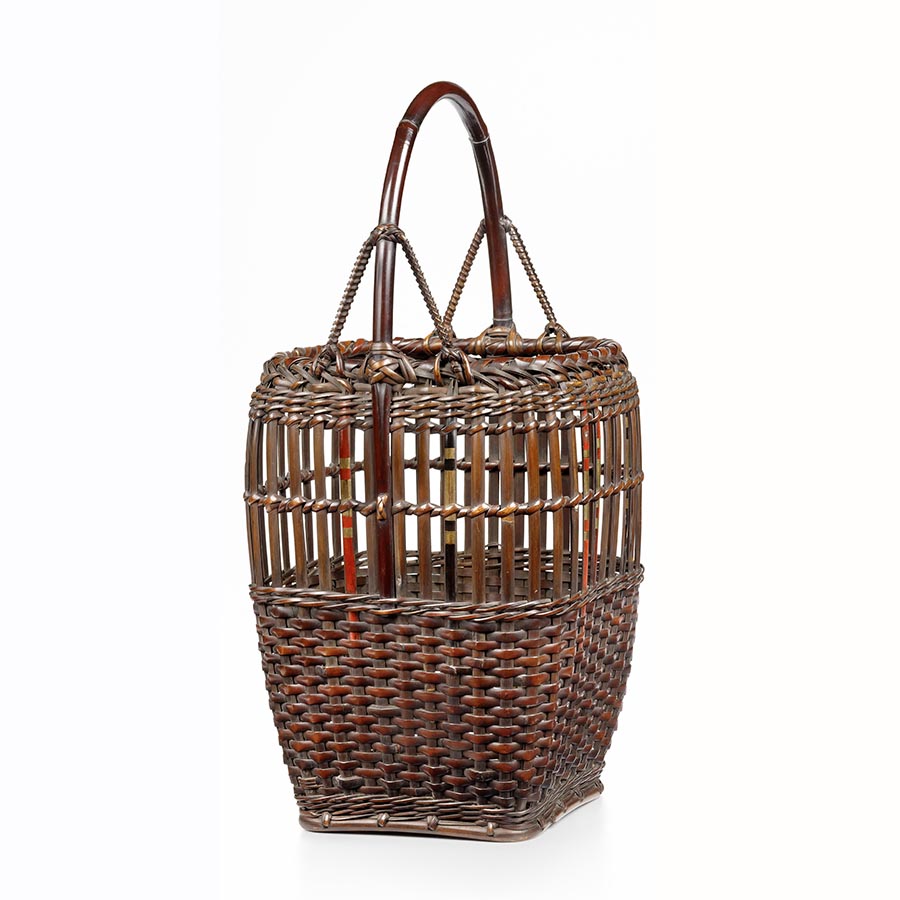Suehiro
Yamamoto Chikuryōsai I / Bamboo
- Sold
-
Material
Hobichiku “Phoenix tail bamboo” = smoked nemagari-dake bamboo
-
Size
54 (h) x 20,5 x 20 cm
-
Period
1929
-
Box
Tomobako
Description
Suehiro means “expanding prosperity”
Yamamoto Chikuryōsai I (1868-1945) also known as Yamamoto Shōen after 1929.
His name is also pronounced Chikuryūsai.
With Iizuka Rōkansai and Tanabe Chikuunsai I, Chikuryōsai I was one of the three bamboo artists briefly mentioned by Bruno Taut, a German architect and design theorician within the Bauhaus movement, in his writings about Japan.
A native of Osaka, a city where bunjin culture blossomed, Yamamoto Chikuryōsai I (Shōen) developped an early interest in bamboo and trained under Wada Waichisai I (1851-1901).
Little is known about the beginning of his career, apart from the many awards he received at exhibitions in Japan and abroad, notably at the International Exhibition of Modern Decorative and Industrial Arts held in Paris in 1925.
He also stood out when he was admitted with other artists working in his discipline at the Imperial Fine Arts Academy Exhibition (Teiten) in 1929.
This event marked an important step in the recognition of bamboo as a major artistic medium. The same year, he passed on his artist name (gō) Chikuryōsai to his oldest son, taking up the name of Shōen until his death.
Chikuryōsai I was an active participant in several artists' associations, including the Naniwa-Ranyū-kai group, which he joined in 1919.
Seals “Yama Yūsei in"
(Yūsei, see plate 42, page 120, NAEJ Collection Catalogue: BASKETS MASTERPIECES OF JAPANESE BAMBOO ART 1850-2015)
“Shoen”
Hakogaki
Hōbichiku, Suehiro hanakago, Showa tsuchinoto-mi, natsu, Shōen zo kore, with seals.
[Hobichiku bamboo, entitled Expanding Prosperity, dated the summer of Showa 4 (1929), Shōen made this, with seals]
Weaving technique
Open square mat plaiting (variant), twining


